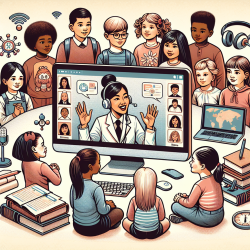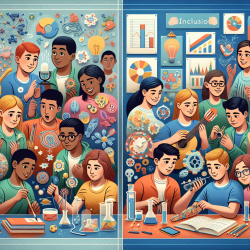Introduction
In the evolving landscape of neurorehabilitation, the integration of advanced technologies is reshaping how we approach therapy, particularly for children. The recent commentary in the Journal of NeuroEngineering and Rehabilitation (JNER) highlights significant trends and future directions in the field. For practitioners in pediatric speech-language pathology, these insights can guide the adoption of innovative strategies to enhance therapeutic outcomes.
The Role of Advanced Technologies
Over the past 15 years, neurorehabilitation has increasingly incorporated advanced technologies such as wearable devices, robotics, and brain-computer interfaces. These tools are not just enhancing research but are also beginning to make their way into clinical practice. For children, this means therapies can be more engaging and tailored to their specific needs.
Wearable technology, for instance, offers real-time data collection, allowing therapists to monitor progress more accurately and adjust interventions accordingly. This data-driven approach ensures that therapy is not only effective but also personalized to each child's unique challenges and strengths.
Embracing the Age of Wearability
The JNER analysis emphasizes the current "age of wearability," where wearable devices are pivotal in rehabilitation. These devices are particularly beneficial in pediatric settings, where engagement and motivation are crucial. By incorporating gamified elements and real-time feedback, wearable technologies can transform traditional therapy sessions into interactive experiences that captivate young minds.
- Wearable Sensors: These devices track movement and physiological responses, providing valuable insights into a child's progress.
- Robotic Assistance: Robotic devices can support children in performing movements they might struggle with, facilitating motor learning and recovery.
- Virtual Reality: VR environments offer immersive experiences that can enhance cognitive and motor skills through simulated real-world tasks.
Data-Driven Personalization
One of the key takeaways from the JNER analysis is the potential for big data to drive personalized interventions. By leveraging data from wearable devices, practitioners can develop precise treatment plans that address the specific needs of each child. This approach aligns with the principles of precision medicine, ensuring that interventions are not only effective but also efficient.
Challenges and Considerations
While the integration of technology in neurorehabilitation holds promise, it also presents challenges. Practitioners must balance technological advancements with the human touch that is essential in therapy. Moreover, the cost and complexity of these technologies can be barriers to widespread adoption. Therefore, ongoing research and collaboration between engineers, clinicians, and educators are crucial to overcoming these hurdles.
Encouraging Further Research
The JNER commentary calls for continued exploration into how these technologies can be optimized for clinical use. For practitioners, this means staying informed about the latest research and being open to integrating new tools into their practice. By participating in research and sharing insights from clinical experiences, practitioners can contribute to the evolving field of neurorehabilitation.
Conclusion
As we move forward, the integration of advanced technologies in pediatric neurorehabilitation offers exciting opportunities to enhance therapeutic outcomes. By embracing data-driven personalization and staying engaged with ongoing research, practitioners can ensure they are providing the best possible care for their young clients.
To read the original research paper, please follow this link: JNER at 15?years: analysis of the state of neuroengineering and rehabilitation.










